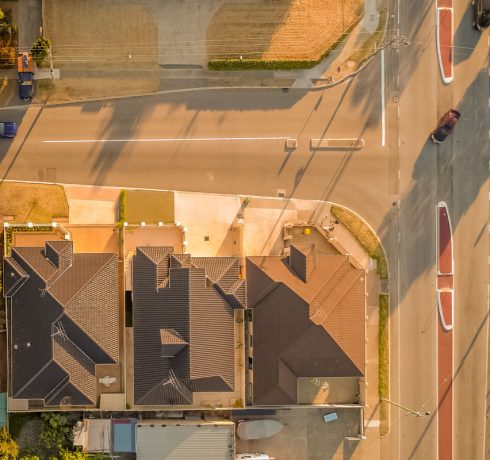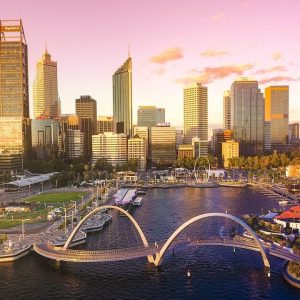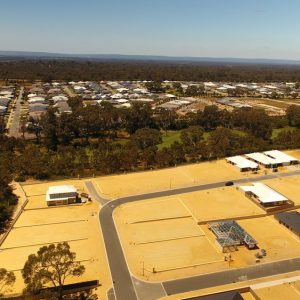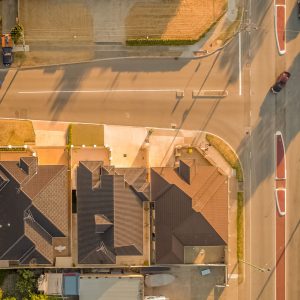Price Change = Demand Change / Supply Change.
It’s a fundamental law of economics, and the dynamics of the WA property market are no different.
In short, if the amount of demand to purchase property in a suburb increases quicker than the increase in supply, the value of the properties in that suburb will go up.
Why am I not focussing on Perth as a whole when I speak of this? Because individuals don’t buy properties in ‘Perth Metro Area’, they buy them in suburbs, streets, and pockets. This explains why there are some suburbs that have tripled in value in the last 15 years, and some that aren’t doing much better than they were in 2003.
But why not take it even further! People don’t just buy ‘property’ in the same way that people don’t just buy a ‘car’. They invest in a particular model that suits their needs, budget, and evolving lifestyle.
So the question should really be,
‘How to forecast which types of property will boom in which suburbs of WA’.
Let’s think about that.
The answer doesn’t lie in past data and it certainly doesn’t lie on a glossy magazine or a free seminar from an ‘expert’ based outside of WA.
The answer for WA is actually very specific to WA’s culture in the same way that the answer for property in Basel, Switzerland or Stockholm, Sweden is very specific to their cultural preferences and practicalities.
Why do you think people in Manhattan, New York, aspire to one day buy their own apartment instead of their own two-storey mansion on 1,012sqm?
The answer is because an apartment is all that is available and all that someone successful and ambitious would reasonably aspire to afford in NY, NY.
Why is it that people in Amsterdam put a high value on liveable attic and basement spaces, but the people of Perth don’t?
Why is it that the houses of the Hollywood Hills are the most expensive in Los Angeles, but houses in the Gooseberry Hills and Upper Swan generally are not?
It’s culture. And that culture comes from practicality to our environment and resources. And demand is aligned with that practicality specific to location.
So what is Perth’s culture? How has practicality shaped our cultural preferences, and how will our evolving city change those practical preferences going forward?
If f we can answer that question, not only can we know what product to own, we can know where to own it.
Remember, Price Change = Demand Change / Supply Change.
So where there is a suburb with a never-ending level of supply, we are already fighting a losing battle.
X Demand / unlimited Supply = undefined Price.
Straight away that means new land estates not in pre-existing, land-locked suburbs are all ineligible.
Sorry, Ellenbrook, Baldivis, Alkimos, Byford, Hillman etc. Unless the government steps in, there’s just no end in sight to the day we see a nominal level of demand balanced by a finite level of supply. You can blame the big land developers for that one.
Why? Because even if there are good factors for demand like proximity to the beach or a good school, there will be a continual level of supply increases for a long time to come. The economics are against you for way too long into the next cycle.
That’s settled, pre-existing, completed suburbs only!
That sorts the supply side out.
Now for the demand side.
The first question to ask yourself is, what do people value about living in Perth? How is that preference and identity changing? If we can pinpoint this, we can identify suburbs that are either currently undervalued or will be undervalued in the future.
Historically, people have purchased property in Perth with considerations in the following order:
- Closeness to the beach or river – evidenced by the fact that the most expensive land in Perth is located in a position closest to the river AND the beach (think Mosman Park, Cottesloe, Peppermint Grove, Fremantle).
- Closeness to the city – evidenced by the fact that land that is both close to the city and the river is the next most expensive suburbs (think Nedlands, Applecross, South Perth) and that those between the city and ocean are also higher value (western suburbs).
- Closeness to activity centres – evidenced by the fact that land that is close to an activity centre is the next most expensive (think Leederville, Mt Lawley, Victoria Park, Claremont)
- Closeness to good state schools – evidenced by the fact that land with little influence from the above factors are the next most expensive when in the catchment zone of a top state school (think Willetton, Riverton, Bull Creek, Churchlands)
These are the 4 major factors that have been the foundation for prosperity for those people smart or lucky enough to have invested in property in these suburbs in the past.
However, to evidence that these 4 factors weren’t always the be-all-and-end-all, ask anyone in Mosman Park who invested in the 50s and they’ll tell you that the suburb was considered a workmanlike area, was populated with factories and caryards, and was just the land they could afford at the time. The beach wasn’t always such an important factor for people.
Why? Because it wasn’t always so easy to get out there as it is nowadays. There were other lifestyles people valued more, like swimming in the river, going to drive-in movies, and having picnics in suburban parks.
Practicalities.
So what will the future residents of Perth value? How will it differ from the last 20 years.
For me, I think we can already see it happening.
1. Proximity to local parks
People have started to value the size of their backyard exponentially less over the last 15 years. The median land size for new blocks has dropped from 600sqm to in the 300s. This means that people aren’t as bothered both from a practicality and status point of view about maintaining a yard, but it doesn’t mean children haven’t stopped needing somewhere to play.
So in addition to the pre-existing 4 factors, which I think will continue to be the foundation of the way Perth values its property for some time, I think a growing number of people will value properties within a street from local parks much more than they already do.
Families will be happy to pay more for a smaller sized property as long as the house fits their needs and there is still a viable option for their children to play safely across the road.
2. Cosmo Living
Whilst people that bought in the 80s were generally able to secure a loan in their early 20s for a decent sized property, new lending laws are making it much harder for young people today to achieve the same milestone as their parents. They certainly aren’t affording to purchase 700sqm within 10km of the city on a graduate salary.
And in addition, young people today clearly value different things to their parents. These preferences seem nearly counter-intuitive to what their parents have grown up learning to value. Proximity to activities centres, café strips and bus routes is valued so much more now than land size. Why? Well because we actually have café strips and activities centres and bus routes that are worth living near and utilising. And our need to be entertained outside in the yard has subsided by the advent of indoor technology.
This just wasn’t the case in the 80s or 90s and hence wasn’t a part of the culture.
Would a 24-year-old like to afford a 4×2 on 700sqm in Mt Lawley? I’m sure they would! But the reality is they can’t. So the practical value is assigned to products they can afford that still offer them the lifestyle they want.
People expect 2 bathrooms so they can share with a housemate to cover the rent, a modern kitchen, an alfresco area or terrace to entertain, secure parking for their car, and a minimum of 9sqm bedrooms to fit double beds and increasing quantities of consumer goods.
No longer do people value the old-style flats with no balcony, elevator, or secure parking. Those are in fact now so out of favour I would consider them a bad investment altogether.
In fact, the older 3×1 or 2×1 strata units are in that same boat. One day these will be knocked down by conglomerate developers as they become derelict.
2×2 boutique apartments and 3×2 villas or townhouses within walking distance of amenities are the modern answer to an inner-city lifestyle that people can afford and therefore demand. This is the product that meets the cultural values of today, and this is the product type that will see growth going forward.
3. Proximity to shopping centres
This is something that has had mixed outcomes over the last generation. Largely, I believe this is directly related to the amenity that the shopping centre provided to the lifestyles of the local residents.
This is all changing now.
For the first time in two generations, all of Perth’s major shopping centres are in the middle of an arms race to upgrade themselves from retail hubs to lifestyle destinations. We’ve already seen the affect it has had in Claremont and the way the boutique apartments created nearby sold like hotcakes.
Watch the same thing happen as Karrinyup, Innaloo, Carousel, and Garden City all start to change the lifestyle habits of locals residents.
Instead of traveling to the city, Fremantle, or a notable activity centre for a nice meal and live entertainment, people are flocking to Whitfords on a Friday night now, for example. The carpark is full between 6pm and 10pm.
Imagine if you could live close enough to these upgraded shopping centres to just walk. Again, Karrinyup, Carousel, Garden City.
4. Closeness to public transport nodes
In nearly every other developed city around the world, property is generally 20% higher in value when it is within walking distance from a train or bus station. So why don’t we see that in Perth? Its because our culture still doesn’t value public transport the way others do.
Why? Because our public transport system is quite underdeveloped and inconvenient compared to most other cities. We just haven’t had the population density for the government to afford to make it functional enough.
But this is all slowly changing. We are now starting to hit a critical mass in population where the government is finally able to start justifying the spend of something like MetroNet.
And whilst this is a long-term, 20-year project, it is something that I believe will start to have a continually greater impact on property prices. So if you’re in it for the longer term, studying the broader MetroNet plans and maps should put you in good stead. Ask yourself, how far would I want to walk to a bus or train that actually got me to work or my friend’s house in a reasonable time period?
Keep it practical. Invest there.
So what are these suburbs that will perform above average in Perth’s next upswing as the population grows through new projects (increasing demand) and the building industry takes its time to find its feet again (slow supply response)?
As I said, the 4 factors of water, city, fun, and schools are still kings. These are your bluechips, and buying the most land or bedrooms in a suburb with as many of these factors as possible should always stead well for you.
But if you can’t afford these established winners, the following suburbs are ideas I would consider that reflect the 4 new factors I have mentioned.
- Warwick – A solid family suburb with a high percentage of parkland, its own shopping centre, and its own train station. Recent zoning changing is providing new dwelling products to the market that are being snapped up at a premium.
- Bassendean – Perennial river play with an upgraded shopping hub and access to the new airport link spur line.
- High Wycombe – A forgotten suburb with solid 1980s double-brick homes and recent rezoning, getting its own train station one stop away from the airport. Don’t be fooled, the Forrestfield train station is actually in High Wycombe.
- Wilson – wedged in between the canning river, Curtin University and the upgraded Carousel shopping Centre. Good zoning opportunities are bringing in new higher-spec products to market.
- Rivervale – Way undervalued for its proximity to the city. Is sitting in neutral waiting for the effects of the upgraded Great Eastern Highway, Belmont forum, Perth Stadium, and strong zoning to push it into Victoria Park territory.
- Doubleview – The most expensive of the list. Will benefit from the upgraded Scarborough Beach Development and Innaloo & Karrinyup upgrades.







Comments are off this post!